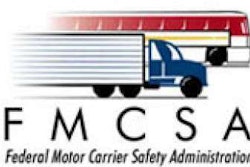PeopleNet, a provider of integrated onboard computing and mobile communications systems, announced Monday, Sept. 20, an integration with TMT Fleet Maintenance software intended to reduce operational costs by automating the inspection-ticket workflow. The announcement was made at TMW’s user conference, TransForum, being held through Wednesday, Sept. 22, at the Gaylord Texan Hotel in Dallas.
“Over the past 10 years, TMW and PeopleNet integrations have demonstrated that tightly integrated fleet processes enable workflow automation,” says Randy Boyles, PeopleNet vice president of tailored solutions. “Like our previous work with TMW, this integration between PeopleNet Fleet Manager and TMT Fleet Maintenance will help fleet managers reduce operating costs and manage more effectively.”
The two companies say they have begun working on eDVIR (electronic driver vehicle inspection report) to automate the creation of inspection tickets. In this centralized closed-loop application, TMT Fleet Maintenance polls PeopleNet’s message history and creates a work order when it detects a vehicle defect identified by a driver in an eDVIR form message. The system automatically red-tags safety-related issues for highest-priority maintenance. When the vehicle repair is completed, the system sends a message through PeopleNet Fleet Manager to dispatch and the vehicle’s scheduled driver, identifying the mechanic and the corrective action that was completed. The complete eDVIR report along with eDVIRs that do not require maintenance are stored in TMT Fleet Maintenance.
“Automating creation and workflow of inspection tickets is a proactive way for us to avoid fines and heavy penalties associated with roadside inspections,” says Heidi Henderson, logistics analyst for HP Hood, which plans to begin eDVIR beta testing in December. “By speeding up the workflow and notifying maintenance before a truck comes in, we can react as quickly as possible to shorten the time between when a truck comes in and getting it back out on the road. Paper buried in an inbox waiting to be sorted through by maintenance and dispatch won’t bottleneck the workflow. Dispatch will have access to estimated completion time and can therefore make arrangements for an additional truck to ensure on-time delivery. Finally, the elimination of our three-part vehicle-inspection form for every vehicle everyday also helps us meet our sustainability goals.”
Henderson adds that eDVIR system reports will be valuable in tracking the effectiveness of Hood’s preventive maintenance program. “All inspection reports in TMT Fleet Maintenance become part of the maintenance history, tracked by driver, vehicle, driver/vehicle combinations and frequency,” she says. “Essentially, we’ll be able to manage by exception more easily. Chronic issues will stand out. We’ll keep an eye out for drivers who never report maintenance issues and may need training about how to identify potential problems.”











